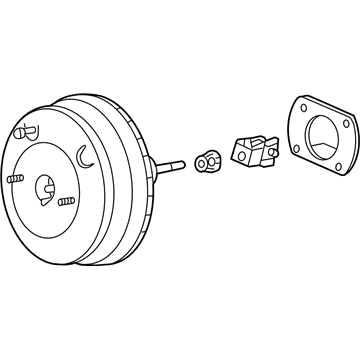×
- Live Chat
- 1-888-984-2011

My Garage
My Account
Cart
Genuine Honda Crosstour Brake Booster
Brake Power Booster- Select Vehicle by Model
- Select Vehicle by VIN
Select Vehicle by Model
orMake
Model
Year
Select Vehicle by VIN
For the most accurate results, select vehicle by your VIN (Vehicle Identification Number).
2 Brake Boosters found
Honda Crosstour Power Set, Master
Part Number: 01469-TP6-A00$555.96 MSRP: $802.25You Save: $246.29 (31%)Honda Crosstour Power Set, Master
Part Number: 01469-TP6-A10$126.11 MSRP: $179.65You Save: $53.54 (30%)
Honda Crosstour Brake Booster
This Honda Crosstour Brake Booster is an important part which decrease amount of pressure exerted by the driver to stop the car. It is a metal vessel called a vacuum chamber, the force generated by the master cylinder is boosted to many times the force applied by the driver when putting the brake pedal. There are two main types of boosters used in Crosstour vehicles: some of the vacuum-operated boosters and hydraulic boosters. Vacuum boosters work on the relative vacuum that exists inside the car's engine and the functioning of hydraulic boosters is based upon the pressure exerted through hydraulic fluid. The boosters are usually effective though they sometimes might malfunction and would then have to be fixed or replaced. Furthermore, there is the Performance Brake Boosters and Power brake conversion kits in case one desires to have the prime braking system to suite his car.
In search of affordable OEM Honda Crosstour Brake Booster? Consider browsing through our extensive inventory of genuine Honda Crosstour Brake Booster. Not only do we provide market-leading prices and a manufacturer's warranty, but we also pride ourselves on exceptional customer service and swift delivery.
Honda Crosstour Brake Booster Parts Questions & Experts Answers
- Q: How to remove and install a power brake booster unit for the Honda Crosstour?A: Depress the brake pedal several times with the engine off and make sure there is no change in the pedal reserve distance. Depress the pedal and start the engine. If the pedal goes down slightly, operation is normal. Start the engine and turn it off after one or two minutes. Depress the brake pedal several times slowly. If the pedal goes down farther the first time but gradually rises after the second or third depression, the booster is airtight. Depress the brake pedal while the engine is running, then stop the engine with the pedal depressed. If there is no change in the pedal reserve travel after holding the pedal for 30 seconds, the booster is airtight. Power brake booster units should not be disassembled. They require special tools not normally found in most automotive repair stations or shops. They are fairly complex and because of their critical relationship to brake performance it is best to replace a defective booster unit with a new or rebuilt one. To remove the booster, first remove the brake master cylinder. Remove the shock tower cross brace, if equipped. Disconnect the hose leading from the engine to the booster. Be careful not to damage the hose when removing it from the booster fitting. Remove and set aside the engine compartment fuse/relay box. Unclip the Brake Lines from the firewall. Remove the air filter housing. Working inside the vehicle, locate the pushrod clevis pin connecting the booster to the brake pedal. Remove the clevis pin retaining clip with pliers and pull out the pin. Remove the four nuts holding the brake booster to the firewall. Slide the booster straight out from the firewall until the studs clear the holes and pull the booster, brackets and gaskets from the engine compartment area. Installation procedures are the reverse of those for removal. Tighten the booster mounting nuts. Also, be sure to use a new cotter pin on the clevis pin. After the final installation of the master cylinder and brake hoses and lines, bleed the brakes.









